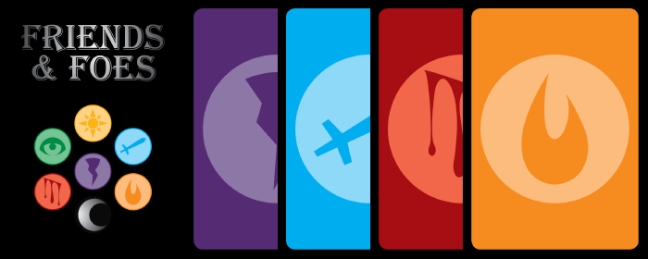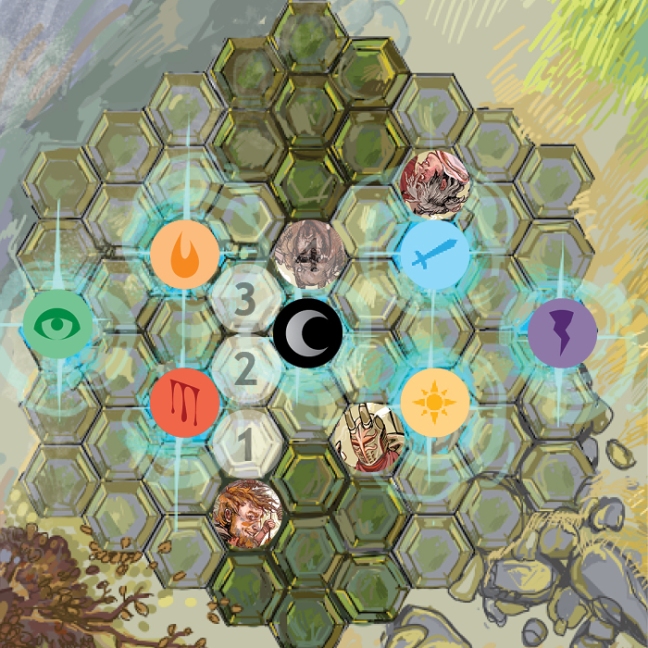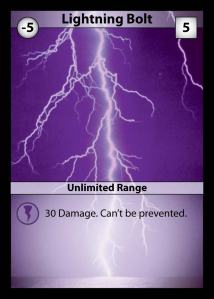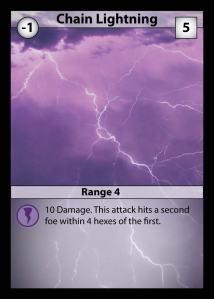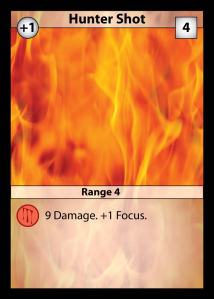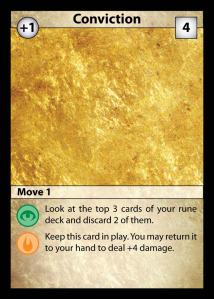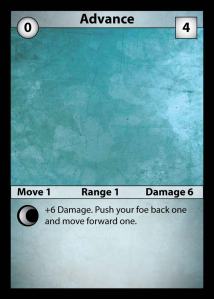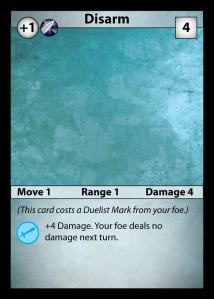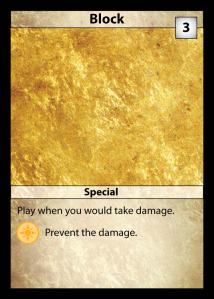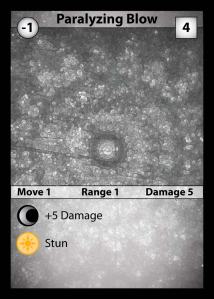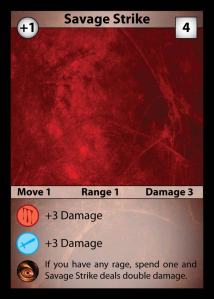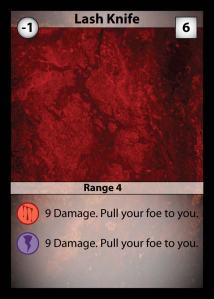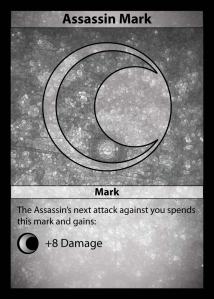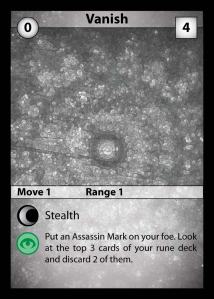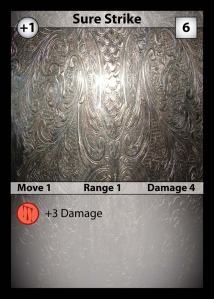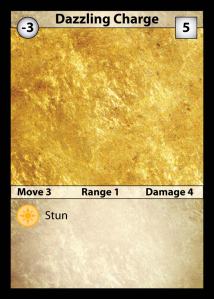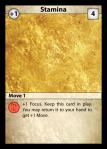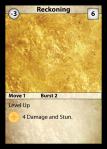The untested game. Abilities are scrawled on index cards, ripped in half. A marked up piece of hex paper from the back room serves as a board. Four players sit around the table ready to play a game that has never been played before. Excitement and dread play competing scenarios in my mind: the game mechanics don’t work; or the game play falls flat and isn’t exciting; or the players are riveted, onlookers gather ’round and yell, “Ohhh!” when a risky play pans out.
I was lucky. The very first play through of this game was a blast. The players put real thought into each decision, imagined the battlefield, and struggled to outplay their opponents. I had good circumstances for my first play. My players were versed in all of the biggest influences on this game: Dungeons & Dragons, Magic: The Gathering, League of Legends and Dominion. The setting was a game shop where I gathered players and passersby became an interested audience.
There were serious flaws with the game at this point; deep flaws that would require major changes. Yet there was a core play experience that was fun from the very beginning. Thinking through the role of chance in game design had paid off.
Flaw # 1 – Player Elimination
In that very first game, a player could be eliminated. I knew that my game possessed the flaw of player elimination before play testing, but I hadn’t come up with a way to fix it yet.
This was my solution – Each character has a certain amount of health: 30 for melee characters, 24 for ranged characters. When a character takes damage equal to their health, they get a wound. Each game is played to a certain number of wounds, depending on the number of players. While you don’t have to watch out too much for overkill damage, the system does reward you for hitting health amounts as exactly as possible since the wounds are all that count towards victory. The system also still rewards you for going after high value squishy ranged characters. This one was the easiest fix.
Flaw #2 – Simultaneous Play
In that very first game, you played one card to represent your action, and one card to represent your target, both face down, and then revealed both of them. The idea was to give each player one decision point, and then let the game rules work out what would happen next. It worked fine a surprising amount of the time (in retrospect) but when it didn’t work, it really didn’t work. There are many examples, such as knock backs, but there’s one example that illustrates the problem well – two melee characters are standing so that there is one hex between them and they each play a melee attack with move 1 targeting the other. Which one moves into that hex?
There was a dark and convoluted path before I let go of completely simultaneous play. My girlfriend really wanted me to embrace simultaneous play, a la slap-jack… I knew that wasn’t my solution, not for this game. Someone suggested putting timing numbers on every card. I tried that, but checking the timing numbers bogged down play like a… like a bog. (I think this mechanic comes from RoboRally, which I really ought to play and haven’t, and the mechanic may work well in that game, but it didn’t in this one.) I won’t take you down the complete twisted path.
Here’s how it works now – There is an “initiative” marker, held by one team at a time. Each player plays an action card face down, and reveals them simultaneously. The team with the “initiative” marker moves all their characters and declares all their targets, in whatever order they choose. Then the other team moves all their characters and declares all their targets. Then runes are revealed simultaneously. Then the teams declare their damage and effects in the same order. Then the initiative marker changes hands.
The best thing about the initiative marker is that it opens up design space for making decisions throughout the turn instead of once, because decisions don’t have to be hidden.
Flaw #3 – Turn Based Movement with Simultaneous Actions
Solving the paradoxes of simultaneous play led to a new design challenge. Consider this scenario – We begin the turn next to each other, we both play a “move 1” ability, and I move first. I want to attack you with my range 1 attack, and you’re already next to me, so I don’t move. Now, you can move one away from me, and I can’t attack you, even though I could have gotten to you with my movement. This is an artifact of simultaneous damage combined with turn based movement and is not an issue in a game like D&D where everything is turn based.
The solution to this problem was easy and direct. You can choose to “follow” your target. If your target moves, you’ll use as much movement as you have that turn, to follow them. You must move directly toward your target. You can choose the hex you land on if it’s ambiguous, but if you have extra movement you don’t get to use it.
Here’s another scenario to consider. We begin the turn with two hexes between us, we both play a “move 1” ability, and I move first. I move one, but you’re not in range yet. I could target you, and then you could choose to battle me or not. But, what if I choose to target you, and then one of your allies comes into range, and you don’t? Now, I’m not attacking anyone, even though there’s a foe right next to me. Now there is a similar rule to the “follow” rule, called the “retaliate” rule. If you choose to retaliate, whenever a foe comes within range of your attack, you can target them. You still only get one target, and you have to decide as soon as someone comes in range.
These two rules play intuitively, and allow me to keep some of the simultaneous elements of the game.
Flaw #4 – Why Move?
Once I introduced the initiative marker, I noticed that players lost track of who had it. I realized that it wasn’t that the players were just being lazy or inattentive, but that movement didn’t matter, especially in the middle third of the game. People would get into position, wail on each other, and then maybe switch targets suddenly once during the game. If I’m going to have a board, it should really matter more than that. People should remember who has initiative, because they should care. I decided to try map objectives. I wanted to be sure that the map objectives I added felt like they belonged in the game.
The map objectives I designed are “rune tokens” you can pick up. Once you have a rune token, you can spend it to automatically hit that rune on one of your abilities. It’s great because it helps to mitigate the frustration of missing an important rune, and feels like a natural fit. Before the map objectives, initiative was always bad, because you give up information first. With map objectives, initiative means you get first chance at picking up a rune.
Onward
I designed this game from scratch, with very little to model it on, and playtesting has revealed numerous flaws. Working out solutions to those flaws has led to some of the most engaging elements of the game, which I didn’t have in mind from the outset. I hope that following my process for developing this game is enjoyable, and maybe even insightful. In future entries I plan to talk about some of the elements of game play that created the impetus for me to design this game. I also plan to discuss in greater detail how I designed the abilities for each character; further rounds of development; the story concept and illustration for the game; what I’ve learned about the indie board game industry; and future possibilities for expanding on this game design.




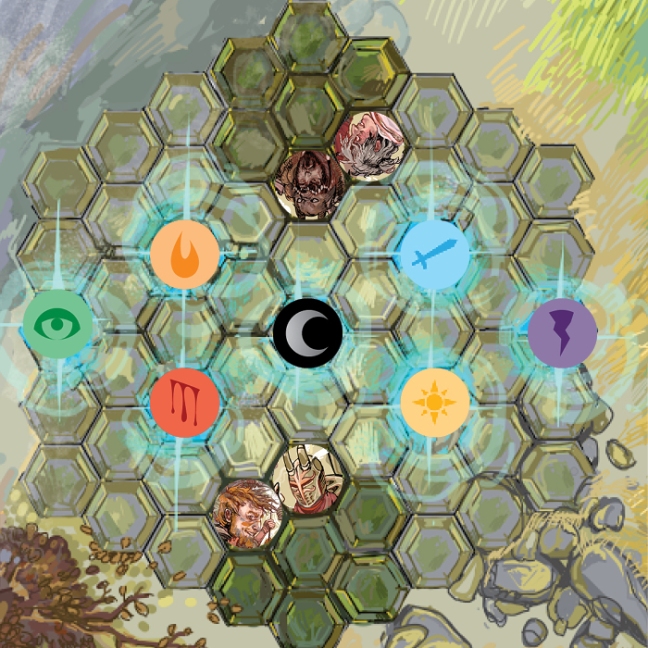
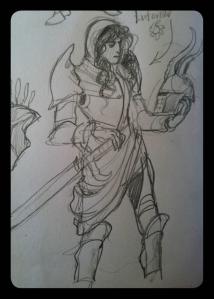

![]() Focus ability.
Focus ability.
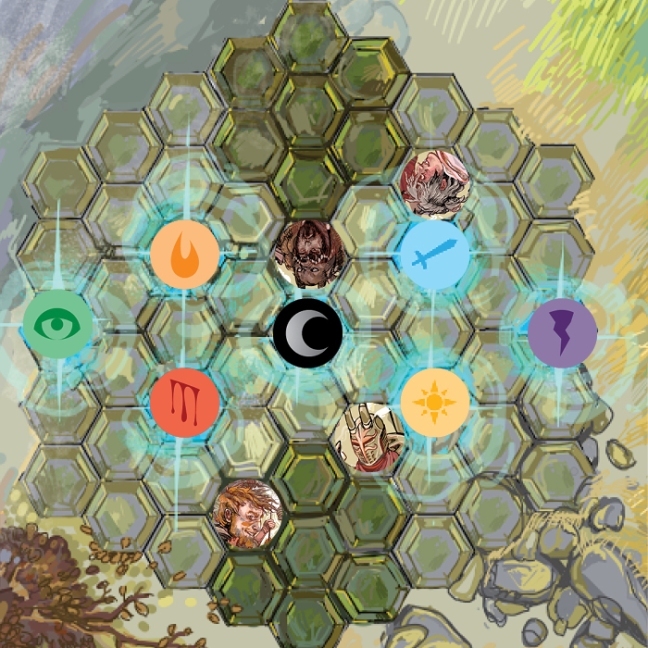
![]() rune cards.
rune cards.